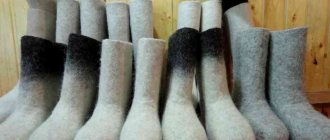Viscose should not be considered synthetic. Although it is produced artificially, the material consists of natural fiber (cellulose). Therefore, it requires no less attention than wool or silk. The most common question is whether viscose shrinks when washed, can it stretch, and how to deal with deformation?
Much depends on the composition. Nowadays, 100% cellulose fiber is rare. Often, to reduce the cost of the material, viscose thread is mixed with polyester, linen, and several types of cotton may be present. In each case, the material may behave differently. Caring for the item has a big impact. Does viscose shrink when washed or not?
How to properly wash viscose items
Viscose is an artificial fabric made from natural cellulose raw materials. It allows air to pass through, absorbs moisture, is lightweight, and does not electrify. Viscose products are difficult to get dirty, easy to wash, and do not fade. Despite its strength and durability, the material requires careful handling. Viscose shrinks after washing, it is important to know the subtleties and secrets of caring for it.
Washing rules
A characteristic feature of viscose: vulnerability to water. The material loses its properties and becomes unusable.
Before starting washing, carry out preliminary preparations:
- study the recommendations for use on the product label;
- sort things by color;
- remove foreign objects from pockets;
- fasten buttons, buttons, zippers;
- get rid of dirt, small lint, turn the products inside out;
- avoid rough physical impact, squeezing;
- use washing powders for thin fabrics (liquid), white items can be washed with oxygen bleach;
- put delicate and thin clothes in a washing case;
- water does not exceed a temperature of 30°C;
- Don't forget to soak the products for 30-40 minutes.
To avoid damage to delicate viscose items, consider the nuances of machine and hand washing.
Machine washable
Despite the fragility and tendency to deformation, it is allowed to wash items made from viscose material in an automatic machine. To keep products in perfect condition, you must follow the following rules:
- suitable modes – delicate or manual;
- washing is carried out at a temperature of 30 degrees;
- turn off the “Spin” and “Drying” modes;
- use concentrated liquid powder;
- Chlorine-containing bleaches are prohibited,
- use powder based on active oxygen;
- at the end of washing, remove the items from the drum and wring them out using a towel;
- Shake viscose items before drying.
Do not use tennis balls or marbles when washing in a machine. Viscose products are not so exposed to dirt, and “testing” will stretch it and puffs will appear.
Handwash
If you decide to wash by hand, you should consider the subtleties:
- It is recommended to soak clothes with traces of dirt or stubborn stains. Use 30-degree water and liquid powder for hand washing. You can dry the powder, the main thing is to wait for it to dissolve. Then place the items in water and leave for 30 minutes. At the end of the procedure, start washing;
- the washing process should be gentle, avoid active friction or rubbing stains with soap, so as not to spoil the structure of the fabric;
- Do not forcefully squeeze or stretch viscose products.
If, despite following the recommendations, the clothes still become in poor condition, then the reasons may be:
- poor quality of purchased items;
- content of fabrics: nylon, elastane, polyester, polyamide, wool.
A universal way to rid viscose of dirt is dry cleaning. Use a soft clothes brush to remove dirt and dust. Then they resort to hand washing to prevent things from shrinking and losing their appearance.
How to avoid shrinkage
To understand how to properly wash viscose so that it does not shrink, pay attention to the composition of the products. Things that contain admixtures of other fabrics are susceptible to deformation. Viscose is used with wool or polyester to add strength.
The properties of materials subject clothing to deformation and it may shrink. Another reason is inadequate quality. If the percentage of viscose to other product materials is low, the mode is selected for the predominant material (cotton, synthetics, etc.).
Key reasons for reducing viscose items:
- Sharp fluctuations in water temperature. I wash and rinse clothes in water at the same temperature.
- Application of alkali-based powders.
- Aggressive spin.
If trouble occurs, your favorite dress or blouse shrinks after washing, you can try to revive the damaged item:
- if the product has not yet dried, you need to put it on and wait until it dries completely;
- iron with steam at minimum temperature, stretch gently;
- wet, squeeze with your hands, leave in a horizontal position on a clean towel, try to stretch;
- If the dress or blouse has become shorter, hang the wet items on hangers lined with foam rubber and pull them down.
How to wash viscose so that it shrinks
Repeated washing will help to shrink viscose items that have stretched a lot and lost their appearance after washing. The washing method depends on the materials that predominate in the fabric.
Wool. The material is fragile and subject to stretching. In order for the products to shrink back 2-3 sizes, wash them at a temperature of 50-60°C and spin them at a maximum speed of 500 rpm. Rinse in cold water and dry horizontally.
Synthetics. To shrink synthetic clothing, you should not rely on the temperature indicated on the product label, it should be 20-30°C higher, and spin the clothes at maximum speed. Then place in cold water for 2-3 hours, hand-squeezing.
Cotton. Cotton products are rarely deformed; they are of high quality, but if not properly cared for, they are still subject to stretching. To give the clothes their previous shape, choose a temperature higher than the recommended one and spin at medium power. Soak in hot water, add conditioner, dry using an electric dryer or on a horizontal plane.
Drying and ironing viscose items
In order not to spoil viscose items, it is important to dry them in proper conditions and adhere to the subtleties of ironing. You should absolutely not wring it out; you need to let the water drain on its own. There are different ways to dry clothes:
- On a clean towel (terry) in a horizontal position.
- Place the viscose on the same towel, roll it into a roll and press lightly with your hands. It will speed up drying, the water will be absorbed, and the fabric will not be damaged.
- Products can be left to dry on hangers. They should be covered with soft fabric or foam rubber to avoid deformations and unsightly bends.
Do not use radiators, heaters, or dryers to dry viscose. Avoid direct exposure to sunlight.
The final stage of clothing care is ironing. Products made from viscose are ironed wet using the delicate mode. Ironing dried items is done through wet gauze or other fabric, inside out. Temperature setting: “Silk”; steaming this fabric is not recommended.
The rules for caring for viscose are easy and accessible; following them will keep your favorite items in perfect condition for a long time. Follow the recommendations, then you won’t have to rack your brains over new images.
The article has been verified by the editors Link to the main publication
articles:
(3 4,33 of 5) Loading...
Can't find the right advice?
Get expert advice online. Ask your question right now!
Source: https://uborkapro.info/stirka-i-himchistka/mashinnaya-stirka/viskoza.html
Subtleties of hand washing
Washing viscose by hand is not difficult at all if you follow the recommendations.
You should start with soaking. Prepare water t=30-35° with washing or suitable detergent. Hot water negatively affects the structure of the fabric and it shrinks. Immerse the items in the soapy solution, then gently wrinkle and iron the fabric. Avoid rough impact, do not rub, twist or squeeze into a ball. Wet viscose fibers are very fragile and vulnerable. They are highly prone to deformation. Shaking will help remove excess water.
How to wash viscose: save the item so that it doesn’t shrink
Practical and beautiful artificial fabric is loved by many and is present in almost every wardrobe. The fabric is delicate and causes difficulties for housewives who do not know how to wash viscose. Things deteriorate and become deformed due to the fragility of wet fiber. The capriciousness is explained by the presence of a natural cellulose base.
Clothing and home textiles made of viscose will retain their shape and attractiveness longer if you follow washing and care rules that take into account the characteristics of the material.
Possible consequences of improper washing
- Violation of the temperature regime leads to the fact that viscose shrinks after washing. This most often happens with items that contain wool or acrylic fibers.
- Proper drying of viscose is no less important for maintaining the original condition of clothing. When you don’t have time to dry your favorite dress and have to wear it wet, there is a high probability that the product will stretch, increasing in volume by a couple of sizes.
- Viscose with the addition of polyester thread is prone to the formation of pills, spoiling the appearance of clothes. One of the reasons for their appearance is washing in a machine drum. Therefore, you need to use a laundry bag.
- For viscose items, do not use steamers or hang them on a line to dry. The material stretches from its own weight and cannot be restored.
How to prepare things for washing
- Start by studying the label, which indicates the temperature and washing method. For different products, care requirements may vary depending on the composition and type of fibers.
- Wash items strictly by type: light, black and colored.
- When machine washing, use a mesh bag in which the material will not rub against the walls of the drum. It will protect the fabric from snagging and pilling.
- Hooks, zippers and buttons on clothing should be fastened to avoid damaging delicate fibers.
- Wash all viscose items inside out.
- If heavily soiled, clothes should be pre-soaked. Dilute the powder or liquid preparation in a bowl of warm water (30-35°). Place the clothes there for 30-40 minutes. After this, squeeze lightly and start washing.
Washing Tips
- Viscose fabrics are sensitive to direct contact with chemicals and homemade stain removers such as vinegar, ammonia, and baking soda.
- Viscose knitwear is recommended to be washed in soft water. A few drops of ammonia, which is thoroughly mixed beforehand, will help soften it additionally.
- Water with the addition of a spoonful of vinegar can refresh the color and make the fabric smoother.
- White viscose items do not fade, but are prone to staining from sunlight. This is another argument not to dry clothes in the sun. If stains have already appeared, hydrogen peroxide or oxygen bleach containing sodium hypochlorite will help remove them.
- There is no need to remove stains on viscose fabric with soap and vigorous rubbing. This deteriorates the fiber structure.
- Choose detergents that do not contain alkali or chlorine, which destroy viscose.
Subtleties of hand washing
Washing viscose by hand is not difficult at all if you follow the recommendations.
You should start with soaking. Prepare water t=30-35° with washing or suitable detergent. Hot water negatively affects the structure of the fabric and it shrinks.
Immerse the items in the soapy solution, then gently wrinkle and iron the fabric. Avoid rough impact, do not rub, twist or squeeze into a ball. Wet viscose fibers are very fragile and vulnerable.
They are highly prone to deformation. Shaking will help remove excess water.
How to machine wash
You shouldn’t deny yourself the pleasure of wearing viscose clothes if you don’t have the opportunity or desire to wash them by hand. A washing machine will successfully cope with this task; you just need to be properly prepared and know how to wash viscose in a washing machine.
- Items should be washed in the drum separately from items made from coarser fabrics.
- Load the clothes into the drum, placing them in the wash bag.
- Turn on the “Manual” or “Delicate” mode on the panel, set the temperature to 30°.
- Automatic spinning in a drum for viscose is contraindicated, so it must be turned off.
- Place liquid detergent or a capsule for washing delicate fabrics in the special compartment. They protect the fibers and reduce friction against the drum walls.
- If there is local contamination, you should add an oxygen stain remover, and for light-colored fabrics, chlorine-free bleach.
- When rinsing, it is recommended to use fabric softener.
Why does viscose deform and how to correct the situation?
Viscose fabrics mixed with other fibers are most susceptible to deformation. Shrinkage is more often observed in low quality products. Natural viscose is durable and serves as a strengthening additive for wool, acrylic, and polyester.
Mistakes that spoil viscose products:
- High temperature exposure and sudden change.
- The use of powders with alkali and aggressive components.
- High-speed spin in a washing machine.
- Strong friction of contaminated areas and twisting.
- Drying near heat sources.
What to do when shrinking
If you wash viscose so that it does not shrink and the size of the item noticeably decreases after washing, then you can try to correct the situation. You should start by simply pulling out the damp item, spread out on the surface. in case of shortening, wet the shirt or dress and hang it on hangers. While suspended, try to stretch it lengthwise.
If this is not enough, then wet the clothes and let the water drain. Put on damp and wear until completely dry. Hot steam while simultaneously pulling with your hands will help to stretch the product.
If the clothes are stretched
When mixing viscose fibers with wool and cotton, the products, on the contrary, stretch after washing. The following techniques will help you reduce the size, which should be chosen taking into account the exact composition of the fabric.
- Combination of viscose and cotton
Cotton is not susceptible to warping, but sometimes it still happens. Washing in hotter water than indicated on the tag, with a spin cycle at medium speed, will help restore the shape. At the end, the products are immersed in hot water with air conditioning for 10 minutes. Dry using a dryer, or spread out on a warm surface.
- With synthetic additives
Clothes are washed with high water heat and spun at maximum speed. Then they are immersed in ice water for a couple of hours. At the end of soaking, carefully squeeze and dry.
- With an admixture of wool fibers
Wool threads are highly susceptible to stretching. To reduce an item by a couple of sizes, wash it at t=+50-60°. The spin is set to the pointer position above 500 rpm. After removing from the machine, wash with cold water and dry flat on a warm, horizontal surface.
Rules for drying viscose clothes
- Place washed items on wooden or plastic hangers to drain. You shouldn't take metal ones - they leave traces.
- You can lay out and smooth the product on a plane, so it will definitely not be deformed.
- A towel or folded sheet will help remove excess moisture. The blouse is placed on a towel and rolled up, pressing lightly. This way, deformation will be avoided.
- Heated dryers and washer dryers cannot be used. As well as drying wet things on radiators or the active sun. Exposure of viscose to high temperatures causes deformation and shrinkage.
- To dry, items with a high content of viscose fiber should be smoothed by hand on a flat surface.
How to iron viscose fabric
Iron any item of clothing or home textiles made from natural cellulose according to the following recommendations.
- The operation should be carried out exclusively from the wrong side.
- Turn the iron on low heat.
- Iron elements and decor on the front side through gauze.
- Do not use a steamer or topical humidification from a spray bottle. Hot steam causes clothes to stretch.
- If moisturizing is necessary, use damp gauze and iron through it.
How to wash viscose correctly so that the item does not shrink or stretch Link to main publication
Source: https://TextileGu.ru/kak-postirat/viskozu-sohranit-veshch-chto-by-ona-ne-sela.html
If the clothes are stretched
A stretched product is more difficult to fix. In this case, you need to take into account what fibers are included in the material:
- Viscose and cotton are washed at temperatures above 50 degrees. Afterwards, the clothes are placed in hot water with conditioner for 10 minutes.
- Viscose with synthetic additives is washed at a temperature of 50 degrees, including the spin function. Rinse with cold water.
- Viscose with wool fibers is washed at 60 degrees. Rinse with cold water.
Rapid temperature changes help shorten the length of cellulose fibers.
What to do if the item shrinks after washing
The washing process is often automatic. But even experienced housewives can make catastrophic mistakes. For example, when unloading laundry from the drum, you may find that your favorite viscose sweater or dress has decreased in size.
Do you really have to part with your favorite clothes? How did this delicate wardrobe item end up in the general pile? The answer to this question will not give anything.
But with the help of the information in our review, you can find out what to do if the item shrinks after washing.
Why do clothes shrink?
Wool, cotton, knitwear and silk are susceptible to shrinkage. In order to understand the problem and not make any more mistakes, you need to figure out why the item shrinks after washing.
- Water temperature. For example, on the tag of a dress made of woolen fabric you can see care instructions. Often the recommended water temperature is indicated there. Usually it is no higher than 30-35 degrees. After washing it in hot water, you can see that the dress has shrunk after washing. This happens because the fibers of the fabric change their structure. In the case of woolen items, if they shrink a lot, this indicates that they are made from really good natural threads.
- Incorrect spin mode. In this case, you should also not deviate from the manufacturer’s advice. If after washing the product shrinks, it means that the recommended regime was violated. Fixing this error is not easy. If clothing gradually shrinks under temperature differences, then mechanical stress only aggravates the situation.
- Features of the fabric. It is necessary to study the properties of the fabric more carefully. For example, silk items are most often subject to shrinkage.
Mechanical stretching of a thing
Restoring shrunken clothes to their original appearance is not so easy, but it is possible. Let's look at several recovery methods.
- Soak the product in cold water for 15 minutes. After that, pull it out and, without squeezing it, lay it on a flat horizontal surface. It is better to put a terry towel. It should dry naturally.
- This method is similar to the first, but differs in a slightly extravagant drying method. After soaking, you need to put the outfit on yourself or on a mannequin. Make sure your clothes dry this way. It is more likely that after this procedure it will return to its previous size. If the dress has shrunk and become very short, then you can evenly hang the weights. Just make sure the fabric can actually bear the load.
- Probably the most effective and less energy-consuming way to return clothes to their previous size. After the specified soaking, wash the product in the washing machine again. Do not add powder. Choose a delicate washing mode; its essence is that during the washing process the fabric fibers stretch. Naturally, this mode is without spin. After the procedure, hang the clothes on hangers and keep them in an upright position. You can also help stretch the item with your hands during the drying process. There is no need to apply excessive force, otherwise the wardrobe item will be deformed.
- This method is used in dry cleaners. But it is also applicable in everyday life. For this you need a steamer. Lay the clothes soaked in cool water horizontally. Without waiting for it to dry, iron it and treat it with hot steam. Moreover, it is possible to do without advanced technologies. It is enough to hang the wet item in the bathroom after washing, and place a container of boiling water underneath.
Stretching with solutions
Products that the housewife always has at hand will help to revive a shrunken item after washing. These options are suitable for clothing and mixed fabrics or wool.
- Hydrogen peroxide. Dilute 6 tsp. peroxide in 10 l. cool water. Even a very long, shrunken dress should be completely dipped into the solution and left for an hour. After this, remove the material from the liquid and wash it in an automatic machine on a delicate cycle.
- Ammonia. Dissolve in 5 l. water 3 tbsp. l. ammonia, 1 tbsp. l. vodka, 1 tbsp. l. turpentine. after exposure to this cocktail, the fabric fibers will become softer and easier to stretch. Rinse and dry in the resulting solution, hanging the item on a hanger.
- Vinegar. This method is suitable if something made of cotton fabric has shrunk. Vinegar also prevents the item from staining when washed. To prepare a solution, 3% vinegar must be diluted in a bowl of cool water. Then apply it to the product using a sponge, trying to stretch it slightly. Hang the fully processed wardrobe item on hangers to dry. You can soak clothes in the solution for 10 minutes, but this is not as effective.
- There is another option to soak the item with hair conditioner after the vinegar bath. It can smooth out the fabric fibers. After this, rinse well. If conditioner has not been used, then in order to neutralize the unpleasant smell of acetic acid, you need to wash the outfit with the addition of conditioner.
- Baking soda. It is necessary to prepare a solution at the rate of 10 g. soda per 1 liter of water. Soak the shrunken item in the resulting liquid for 12 hours. Wash with added washing powder. After this, another solution is used, consisting of 10 tbsp. l. vinegar diluted in 2 liters. water. Soak the item in it for 2 hours, and then rinse, wash and dry.
- An unpleasant situation where clothes have shrunk can be corrected by ordinary washing powder. To do this, you just need to hold the material in water with detergent dissolved in it for 30 minutes. After this, rinse the fabric and wrap it in plastic. And then put the bundle in the freezer of the refrigerator for exactly one day. Next, defrost the thing and lay it out horizontally.
How to prevent things from shrinking
It seems that the pain of stretching a shrunken item is the best preventive lesson. But it’s better to have additional knowledge on how to make sure this doesn’t happen again.
- Make it a habit to examine the tags on items, especially those made from potentially delicate fabrics.
- Always wash in cool water. The fabric fibers will remain stronger and the item will last longer.
- When choosing a woolen new thing, buy the product one size larger.
- Do not leave the item near heating devices or in direct sunlight.
Perhaps the best way to prevent fabric shrinkage is to follow the instructions and be more careful about sorting your laundry before washing. However, now you have knowledge in your arsenal of what to do if such a situation does occur.
You may also like
Source: https://StiraemDoma.ru/stirka/veshh-sela-chto-delat.html
Washing Tips
- Viscose fabrics are sensitive to direct contact with chemicals and homemade stain removers such as vinegar, ammonia, and baking soda.
- Viscose knitwear is recommended to be washed in soft water. A few drops of ammonia, which is thoroughly mixed beforehand, will help soften it additionally.
- Water with the addition of a spoonful of vinegar can refresh the color and make the fabric smoother.
- White viscose items do not fade, but are prone to staining from sunlight. This is another argument not to dry clothes in the sun. If stains have already appeared, hydrogen peroxide or oxygen bleach containing sodium hypochlorite will help remove them.
- There is no need to remove stains on viscose fabric with soap and vigorous rubbing. This deteriorates the fiber structure.
- Choose detergents that do not contain alkali or chlorine, which destroy viscose.
How to properly wash and dry viscose so that it does not shrink after washing
Whether the fabric (viscose) shrinks during washing or not, you need to know before you start washing, since there is a risk of completely ruining the item. 100% viscose or mixed with other materials can be washed at a temperature not exceeding 30 degrees.
Soak the product in a basin for half an hour, and then wash it carefully, without squeezing and avoiding friction. Wring out the clothes by wrapping the dripping dress in a towel, without using force. Iron inside out through a damp cotton cloth.
Any clothing has its own requirements for washing, and failure to comply with them leads to shrinkage or stretching of the fabric. This is especially true for viscose. This material is pleasant to the touch, has high throughput and looks good on the body, so it has earned many positive reviews.
If you have such items in your wardrobe, find out how to wash viscose so that it does not shrink and retains its shape.
Why does viscose become deformed?
Purchasing an item that has a 100% viscose composition is problematic, since most manufacturers, in order to save money, dilute the material with synthetics and linen, polyester and kulirka, staple and cotton, acrylic and nylon, polyamide, wool, and elastane. It is this factor that provokes deformation of the material during washing, since some additives require the same care conditions, while others require almost the opposite.
Viscose is a capricious fabric
Additional factors that spoil viscose:
- Viscose material, combined with polyester, cotton or linen fabric, can not only shrink, but also roll into pellets.
- Incorrect selection of water temperature will deform the wool added to the viscose structure. This causes the material to stretch.
- Also, this factor can ruin even “pure” viscose. Then the fabric will lose its shape, warp or stretch. This always happens if knitted items are washed in inappropriate conditions.
- Hot drying is not suitable for viscose. The consequences are similar to washing at the wrong temperature.
By ironing viscose fabric with a hot iron, twisting it too much or squeezing the material at high speeds (in a washing machine), you risk irreversibly damaging the item.
To minimize the risk of damage, consider the manufacturer's label (tag). The composition and features of care are described in detail there. Be sure to stick to them, otherwise the dress won't last long.
What to do if viscose stretches or shrinks
If you didn’t know whether viscose shrinks after hand or machine washing or not, and you washed the product incorrectly, try to correct the situation.
To stretch items that have shrunk after washing:
- Put on the wet product and walk in it until the fabric is completely dry. The material must take the shape of the body.
- Set the iron to the “silk” program, turn on the steam generator and iron the damp item. To lengthen the sleeves, gently pull them.
- Wet the viscose generously and hang it on the trempel to drain.
The last option for correcting shrinkage is less popular, since when clothing is stretched on a trempel, it can change shape.
If a thing has lost its shape, it is almost impossible to restore it
How to iron viscose
Every ironing is a test for viscose, especially when mixed with other materials.
You can iron viscose only from the wrong side
In extreme cases, ironing should be done following the following algorithm:
- Set the iron to the “silk” setting.
- Turn the product inside out.
- Spray the fabric with a spray bottle until damp.
To prevent the item from deteriorating, it is better to iron it through a damp cotton cloth. If it is dry, then move on to another area so that the material does not overheat.
Knowing in advance whether viscose shrinks after washing, you will prevent its damage, therefore, when buying any delicate items, first of all study the tag. If it is missing, you should refuse the purchase, otherwise improper processing will lead to irreversible consequences.
How to properly wash viscose in a machine is shown in the video:
Larisa, October 9, 2021.
to the Modern Housekeeping channel in Yandex.Zen
Save and share information on social networks:
We recommend reading
- European sizes
- Laundry capsules
- Washing a jacket
Source: https://sovremennoedomovodstvo.ru/lifehack/stirka-viskozy/
How to machine wash
You shouldn’t deny yourself the pleasure of wearing viscose clothes if you don’t have the opportunity or desire to wash them by hand. A washing machine will successfully cope with this task; you just need to be properly prepared and know how to wash viscose in a washing machine.
- Items should be washed in the drum separately from items made from coarser fabrics.
- Load the clothes into the drum, placing them in the wash bag.
- Turn on the “Manual” or “Delicate” mode on the panel, set the temperature to 30°.
- Automatic spinning in a drum for viscose is contraindicated, so it must be turned off.
- Place liquid detergent or a capsule for washing delicate fabrics in the special compartment. They protect the fibers and reduce friction against the drum walls.
- If there is local contamination, you should add an oxygen stain remover, and for light-colored fabrics, chlorine-free bleach.
- When rinsing, it is recommended to use fabric softener.
Does viscose shrink after washing - how to wash viscose, does it shrink
Viscose should not be considered synthetic. Although it is produced artificially, the material consists of natural fiber (cellulose). Therefore, it requires no less attention than wool or silk. The most common question is whether viscose shrinks when washed, can it stretch, and how to deal with deformation?
Much depends on the composition. Nowadays, 100% cellulose fiber is rare. Often, to reduce the cost of the material, viscose thread is mixed with polyester, linen, and several types of cotton may be present. In each case, the material may behave differently. Caring for the item has a big impact. Does viscose shrink when washed or not?
Preparation before washing
If the item is not very dirty, there are no stains on it, then a regular rinse in cool water will help add freshness. You can soak for half an hour, then gently squeeze and dry. But this rarely happens; a full wash with previous preparation is often required.
What you need to do first:
- Sort things out. We remove white from color. Viscose may fade if low quality dyes are used.
- Turn out the pockets. Checking the seams. If there is a lot of debris or threads in them, you need to clean them with a brush.
- Fasten locks, buttons, snaps so that they do not deform the product when washed.
- If clothes have heavy brooches, buttons or other decorative elements, it is better to rip them off and unfasten them. Otherwise, wet viscose will stretch even more due to weight.
- Before washing, clothes should be turned inside out.
Proper washing of viscose
Whether viscose shrinks when washed is primarily affected by water temperature. Under no circumstances should it exceed 50°C. The material will definitely shrink in hot water.
The easiest way to test the durability of the fabric is to stretch a piece that often comes with clothing as a sample. It is usually attached to the label or sewn on the reverse side.
If it is not there, then the situation is a little more complicated.
How to wash viscose:
- liquid laundry detergent;
- capsules;
- Powder is also suitable, but for colored and delicate fabrics.
If there are stains on viscose items, gentle products are used to remove them. Whiteness is only suitable for white fabrics, but this is not the best solution either.
No lemon juice, vinegar, kefir or other “grandmother’s” methods. Also, don’t get carried away with boiling.
After it, it no longer matters whether the viscose shrinks after washing, since it will still not be possible to return to its original size and shape.
In the washing machine
Of all the washing modes for viscose, silk or wool are suitable, you can set a delicate program, it all depends on the machine itself. It is important for us that the temperature does not exceed 30°C and that the clothes spin neatly inside the drum. Sometimes the spin cycle is turned off to prevent stretching or shrinkage.
How to wash viscose in a washing machine:
- It is advisable to place the item in a bag; it prevents the clothes from stretching and protects them from accidental damage. If it is not there, then you should at least exclude washing it together with items made of coarse fabric.
- Add detergent to the special compartment of the machine.
If capsules are used, throw them into the drum along with your clothes. - Turn on the recommended program and wait for the wash to finish.
- After the notification about the end of the wash, it is advisable to immediately remove the item from the drum so that it does not cake. Take it with both hands and shake it, removing large folds.
If after the first wash a viscose item does not shrink, this does not guarantee stability. It may become deformed a second time or a third time if the temperature regime is violated or the wrong program is selected.
Has the item gone bad?
Viscose has many advantages over other fabrics, but there is one significant disadvantage - when wet, this material loses strength. It would be good if the owner knew about this before purchasing it or at least before the first wash. What to do if the item has already deteriorated? We will have to reanimate it, return it to its original form.
If the item is stretched
For some reason, many people are concerned about whether viscose shrinks. In fact, it may stretch. This especially happens when using knitwear made from viscose yarn. Knitted fabric increases in length after washing and when worn.
How to resuscitate a stretched item:
- Wash in hot water. But you don’t need to immediately throw it into boiling water. First, at 50 degrees, dry, check. Then (if necessary) at 60, 70. At the same time, make sure that the fabric does not fade. You can add a little vinegar.
- Cut off excess.
Sometimes it’s easier to remove the length of a skirt or blouse than to “conjure” temperatures, wash and dry it many times. - Most often, it is not possible to put the item back together; the stretched fabric does not compress. Therefore, the solution is to recut the model yourself or take it to a professional seamstress.
If the item shrinks
You can endlessly find out whether viscose shrinks after washing or not, test a fabric sample, and then simply ruin the item. For example, accidentally throwing other clothes into the machine drum or mixing up the mode. What to do if viscose shrinks?
How to stretch viscose:
- Sprinkle the item with water, stretch it and iron it. Work with the wrong side. It is advisable to apply a measuring tape and check the size.
- Pour warm water into a basin, immerse, wet well.
You can leave it for a while so that the fibers are well saturated. Then squeeze it lightly, place it on a white terry towel, and stretch it in the desired directions. You can secure the edges with pins before drying.
How to dry viscose clothes
You can dry viscose clothes vertically, but not on a line. It leaves creases, and besides, the wet fabric is heavy, the rope bends, the material hangs unevenly and becomes deformed. For vertical drying, it is better to use soft hangers.
If the item is large, heavy, or has already stretched when wet, it is better to dry it on a horizontal surface. To prevent the process from taking much time, cotton blankets, bedspreads, and terry towels are usually laid underneath, which absorb moisture well.
Important! Viscose should never be dried in the sun or on heating radiators, or near other heating devices.
Possible consequences of improper washing
- Violation of the temperature regime leads to the fact that viscose shrinks after washing. This most often happens with items that contain wool or acrylic fibers.
- Proper drying of viscose is no less important for maintaining the original condition of clothing. When you don’t have time to dry your favorite dress and have to wear it wet, there is a high probability that the product will stretch, increasing in volume by a couple of sizes.
- Viscose with the addition of polyester thread is prone to the formation of pills, spoiling the appearance of clothes. One of the reasons for their appearance is washing in a machine drum. Therefore, you need to use a laundry bag.
- For viscose items, do not use steamers or hang them on a line to dry. The material stretches from its own weight and cannot be restored.
Rules for drying viscose clothes
- Place washed items on wooden or plastic hangers to drain. You shouldn't take metal ones - they leave traces.
- You can lay out and smooth the product on a plane, so it will definitely not be deformed.
- A towel or folded sheet will help remove excess moisture. The blouse is placed on a towel and rolled up, pressing lightly. This way, deformation will be avoided.
- Heated dryers and washer dryers cannot be used. As well as drying wet things on radiators or the active sun. Exposure of viscose to high temperatures causes deformation and shrinkage.
- To dry, items with a high content of viscose fiber should be smoothed by hand on a flat surface.
How to Reduce Clothes Shrinkage: 6 Best Ways to Reduce Fabric Shrinkage
The clothing shrinkage puzzle. Why should I shrink my clothes? Why do you?
Well, for a variety of reasons.
Maybe you were given this beautiful sweater, but it's just too big. Maybe you bought a nice hoodie yourself and while you thought it was showroom perfect, you now feel like it should be smaller to suit you better
Or you yourself stretched the clothes - you carelessly wrung out to remove water and dry the fishing line, or even worse, dry it.
Or, luckily, you lost weight after you bought the pants.
Or a scenario that happens to me (I wish this had happened earlier) is ordering online. I always order larger sizes because I hate returning things and all the formalities that come with it just because they're smaller—it sucks. So, other than swallowing the bitter pill of donating clothes, I see no other option - other than trying to make them smaller to fit me - which is easier than altering them.
Why do I think clothes might shrink?
As a seamstress (seamstress, tailor, sewer, whatever) I'm familiar with shrink fabric - a lot of it!. Once I buy fabric, they are almost always pre-shrunk before they hit the cutting table.
This is because most of the fibers in a fabric are stretched during the manufacturing process (something to do with economics. More on that here in the post on how to keep clothes from shrinking) when those fibers come into contact with water and are then subjected to stirring the wash, they return to their original size (smaller) as soon as they dry.
Fabric that is not pre-shrinked before cutting and sewing will shrink when the subsequent garment is washed.
So the shirt you bought that fits perfectly and hugs you in all the right places may end up making you look terrible after the first wash - pinching you in all the wrong places.
The fabrics are non-shrinking and non-shrinking.
Some fabrics are more prone to shrinkage than others. Let's say you have a wool jacket - it will definitely shrink after washing. Unless it's made from pre-shrunk wool fiber. My favorite is the plaid cotton flannel - I know it will shrink a little.
Cotton shrinks, as do most natural fabrics such as linen, cashmere, mohair, boucle, organza, georgette, dupioni silk, Thai silk. Most of my dresses in stores are made from viscose, jersey - they also mostly shrink.
Synthetic fabrics such as polyester, nylon do not shrink, so you may only end up disappointing yourself. Do not attempt to shrink clothing marked "Dry Clean Only", leather, fur, suede, beaded fabric, canvas, upholstery fabric, PVC, nylon Ripstock. Check out this in-depth post on the topic – Does Polyester Shrink?
Anti-shrinkage treatments are becoming common on natural fabrics that are bound to shrink—so if the fabric care label says the garment's fabric is anti-shrinkage treated or Sanforated (another anti-shrinkage treatment), leave it alone—gift the shirt to someone. then to another.
Table of fabrics showing their tendency to shrink.
| Textile | Shrinkage during wet cleaning |
| Viscose | High |
| Linen | High |
| Cotton | Moderate |
| Wool | Moderate |
| Silk | Short |
| Nylon | Short |
| Polyester | Short |
| Acetate | Short |
Best Ways to Shrink Clothes
Methods you can use to shrink clothing
1 Regular machine wash
, ,
Dry and iron - no harm
Viscose fiber shrinks not only when washed incorrectly, but also due to errors during drying and ironing. Therefore, washed viscose clothing must be handled with the same care.
- In order for the water to drain naturally from the product, it is hung on hangers and left for a while.
- Then the item is wrapped in a terry towel to absorb any remaining excess moisture.
- Further drying occurs away from heat sources and direct sunlight.
- It is carried out by hanging clothes on wooden or fabric hangers or laying them out on a large terry towel.
Viscose should be ironed at the appropriate temperature (“Silk”). This is done exclusively from the wrong side, otherwise an unpleasant shine from melted fibers will form on the surface of the material. It is no longer possible to get rid of this defect.
Ironing viscose, as already mentioned, is carried out without steaming. It is also undesirable to spray the surface of the fabric with water - this may leave streaks on it. But it’s quite easy to smooth out viscose if you don’t dry the item a little, and don’t stretch the surface of the material with an iron in the process.
Clothes made from viscose are classified as delicate and require appropriate care. But in exchange for this, its owner will receive a long service life of such pleasant things. And also significant savings. After all, for example, natural silk, which has many properties similar to viscose, is no less delicate. But its price can be several times higher.
How to iron viscose fabric
Iron any item of clothing or home textiles made from natural cellulose according to the following recommendations.
- The operation should be carried out exclusively from the wrong side.
- Turn the iron on low heat.
- Iron elements and decor on the front side through gauze.
- Do not use a steamer or topical humidification from a spray bottle. Hot steam causes clothes to stretch.
- If moisturizing is necessary, use damp gauze and iron through it.











